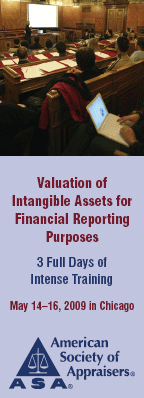|
Middle market deal volume and valuations held steady from the third quarter to the fourth quarter of 2008
Contrary to expectations, middle market deal volume and valuations held
steady from the third quarter to the fourth quarter of 2008. However,
the economic crisis severely affected debt levels, which declined
dramatically, according to GF Data Resources’ Middle Market M&A Valuation Report
for the fourth quarter of 2008. GF is a proprietary database that
collects detailed data on private-equity transactions valued between
$10 million and $250 million. “Fourth quarter valuations remained
in line with quarterly averages dating back to mid-2007, when the
mortgage lending crisis first affected public equity markets,” Andrew Greenberg, GF
Data Resources’ CEO said, adding, “debt levels fell
sharply, a result of the tightening credit markets and the lack of
available cash needed to finance these deals.”
“This is comparable to deal volume both before and after the
financial industry meltdown came into full effect in the fall,”
Greenberg explained. “While the data suggests a continuation of
activity in the lower middle market [deals valued below $100 million]
it also provides evidence of a freeze occurring among larger deals
where the pullback in credit has been more severe. Firms contributing
to the report completed 13 deals in the $100 million to $250 million
range in 2007, but only five in the same range this past year.”
The primary valuation metric—Total Enterprise Value as a multiple
of adjusted Earnings Before Interest, Taxes, Depreciation and
Amortization (TEV/EBITDA)—averaged 5.9x for the fourth quarter,
down from 6.3x in the third quarter of 2008 but up slightly from 5.8x
in the second half of 2007. “Total debt and senior debt declined
dramatically, falling to 2.4x Adjusted EBITDA and 1.9x,
respectively,” Greenberg noted. “Those number were 3.4x and
2.6x, respectively, in the third quarter, and averaged 3.4x and 2.5x
respectively for the first half of 2008. As a result of declining debt
levels, average equity contributions soared to 59.9 percent, up almost
20 percentage points from the third quarter of 2007.” Individuals
and companies interested in subscribing to the Middle Market M&A Valuation Report can contact GF Data Resources by visiting their Website.
How has the recession affected BV firm recruitment and retention?
Obviously, there are many large BV firms. However, data from the 2009 Business Valuation Firm Economics & Best Practices Survey
from Business Valuation Resources (BVR), show that the business
valuation profession is dominated by independent practitioners, whether
full-time business appraisers or CPAs who also do valuations. According
to our Survey, the median size practice providing BV services
employs a partner and two employees—a total staff of three. In
addition, a BV practice with total staff (including partners) of nine
would rank in the top 14% of the largest BV firms in North America. Yet
when it comes to hiring freezes and layoffs, small and midsize BV firms
are perhaps more susceptible to the current economic crisis than their
larger peers. Or are they? To find out, and offer information
that readers can use to assess their firm’s current condition, we
have put together a survey that should offer important information to experts in organizations of all sizes. You can take the survey online
and look for insights gleaned from the poll in an upcoming issue of the
BVWire™. And remember, as always, all responses are strictly confidential.
BV experts can now get an insider’s perspective on the Pension Protection Act of 2006
The Pension Protection Act (PPA) of 2006 presented new guidelines by
which business appraisers and CPAs operate, most notably increasing the
penalties these professionals can suffer. Since its passage three year
ago, new guidelines and regulations have clarified appraiser penalties,
while altering the rules by which they operate. Clearly, though, there
is a trade off between an increase in business and what is required of
appraisers. A depth of knowledge and perspective, therefore, can mean
the difference between penalty and prosperity.
IRS New Rules: Pension Protection Act and Beyond, a 100-minute BVR teleconference, will feature an all-star panel—tax attorney William Forsberg, Internal Revenue Service territory director Michael Gregory, the Institute of Business Appraisers’ executive director Howard Lewis, and business appraisal expert and moderator Robert Cimasi, president
of St. Louis, Missouri’s Health Capital Consultants. The
panel’s diverse viewpoints will give the guidance all BV
practitioners need. This teleconference will take place on Thursday, March 18
from 10:00am-11:40am PST/1:00pm-2:40pm EST. Attendees can receive 2 CPE
and/or 1.5 CLE credits. To find out more or to register, click here.
Weigh in on the Appraisal Standards Board’s (ASB) 3rd Exposure Draft of proposed changes to the 2010-11 USPAP
The ASB is soliciting comments to its 3rd Exposure Draft on revisions to the Uniform Standards of Professional Appraisal Practice (USPAP). Those interested in commenting before the Friday, March 27 deadline can do so via e-mail.
Questions regarding the Exposure Draft and the topics covered—the
definition of “assignment;” the definition of
“signature;” the definition of “jurisdictional
exception” and revisions to the jurisdictional exception rule;
the ethics rule; the competency rule; and Standard 3, appraisal review,
development, and reporting—should be directed to Carrie Composto.
More on Goodwill before—and after—Gaskins from BVResources
Last week’s coverage of Gaskill v. Robbins
generated a few e-mails from readers looking for more on this important
case. Interested readers will be happy to know that the full-text of
the Kentucky court’s decision now joins the over 1,500
matrimonial cases posted to BVLaw™, the single-largest, BV-specific case law database available to financial experts, valuation analysts, and attorneys. More good news: We have updated our “Goodwill Hunting,” state-by-state summary to reflect the new ruling in Gaskill; the free download is available here.
Indeed, if you have not visited www.bvresources.com
in recent weeks, now is the time to take a closer look. We are
constantly updating the site to offer the information and insights that
BV experts need to improve their practices. Much of it, in fact, is
free for the taking. Case in point: The Free Downloads page includes a number of must-reads. Below is a quick list of the most downloaded files over the last several months:
- Appraisals for Tax Purposes: Collateral Damage of the ‘Pomeroy Bill’
Authored by Will Frazier, this is a Special Report from the Business Valuation Update™
- Summary of FAS 157, Fair Value Measurements
A summary that includes key points, new disclosure
requirements and a discussion on the convergence with international
valuation standards
- Free Issue of the Economic Outlook Update™ 4Q 2008
An economic summary of one of the worst quarterly economic results in history
- Median Pricing Multiples from the Pratt's Stats® Database
Valuation multiples haven’t dropped yet, but all the data for 2008 isn’t in yet
- Reporting Standards Update: What All BV Analysts Must Know
Authored by Donald P. Wisehart and David Anderson,
this is a comparative analysis of the AICPA, ASA, NACVA, USPAP and IBA
standards and includes a list of Permitted Engagements and Reports per
organization
Another attack on fair value
The House Financial Services Committee’s recently announced March 12 hearing on mark to market accounting
has the blogosphere abuzz with discussion of whether it will set the
stage for the demise of this hotly-debated accounting rule. The Capital
Markets Subcommittee, chaired by Rep. Paul Kanjorski (D-PA), will conduct the hearing. Kanjorski’s subcommittee, comes on the heels of a letter sent to Treasury Secretary Tim Geithner and National Economic Council Director Larry Summers,
in which representative Kanjorski writes: “We are in a time of
severe market turmoil and this accounting rule is counterproductive
and, frankly, making the economic situation worse. I have heard from
businesses and banks in my district about this rule and how its
application has forced them to write down mortgage-related securities
and other assets, thus exacerbating the credit crisis. Additionally, I
believe suspending mark-to-market will save taxpayer dollars by
allowing banks to avoid booking losses on securities that may have
value after this credit crisis subsides. We must do something to
provide financial relief and I believe temporarily suspending these
accounting rules is one important step we must take.”
The Public Company Accounting
Oversight Board (PCAOB) votes to repropose for comment on auditing
standard on Engagement Quality Review (EQR)
The Board first proposed a new standard on EQR on February 26, 2008. According to the announcement,
“the proposal would supersede the Board’s quality control
standard, SECPS Requirements of Membership, Section 1000.08(f) and
apply to all audit engagements and engagements to review interim
financial information conducted pursuant to the standards of the PCAOB.
The proposed EQR standard also provides a framework for an engagement
quality reviewer to evaluate the significant judgments made by the
engagement team and conclusions reached in forming an overall
conclusion on the engagement.” The Board is seeking comment on
this proposed standard for a 45-day period.
|



